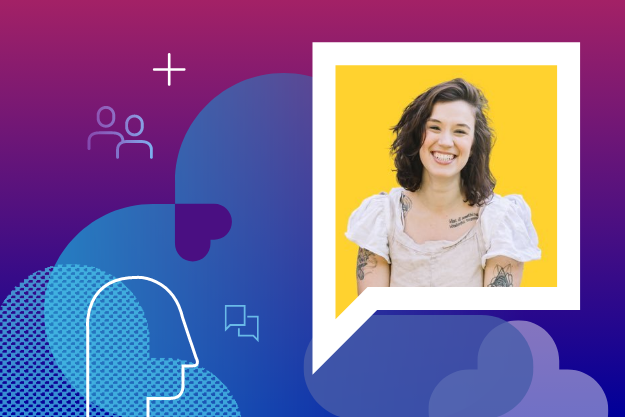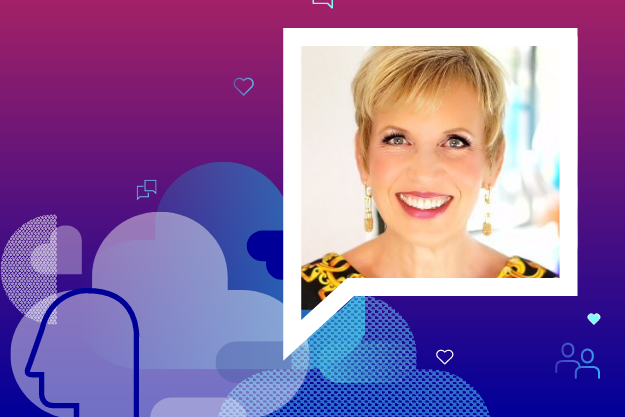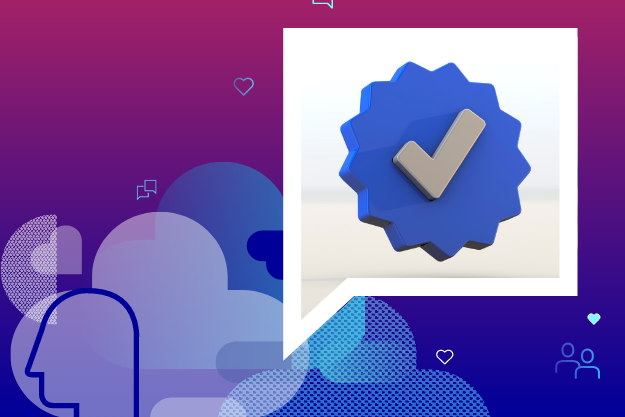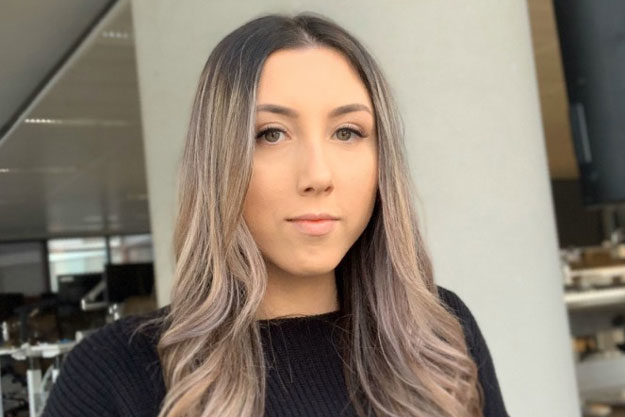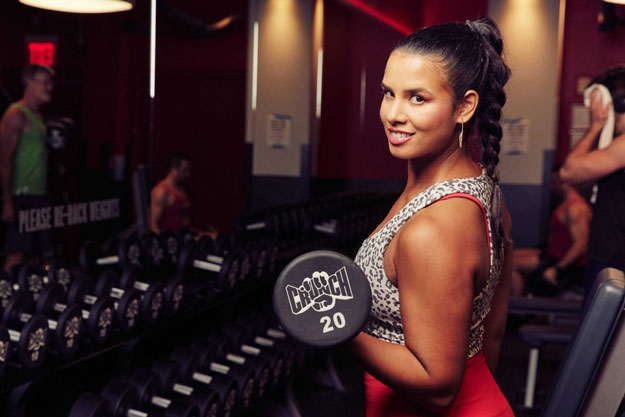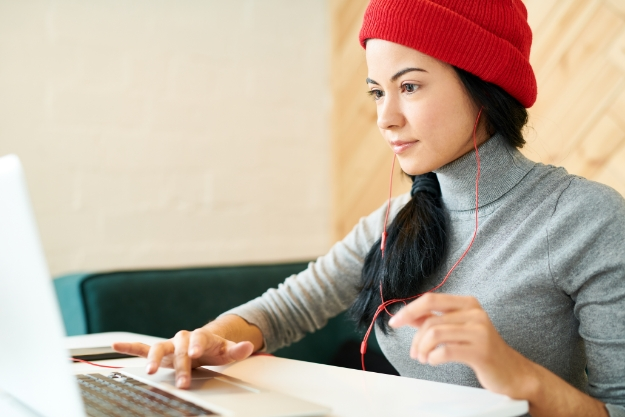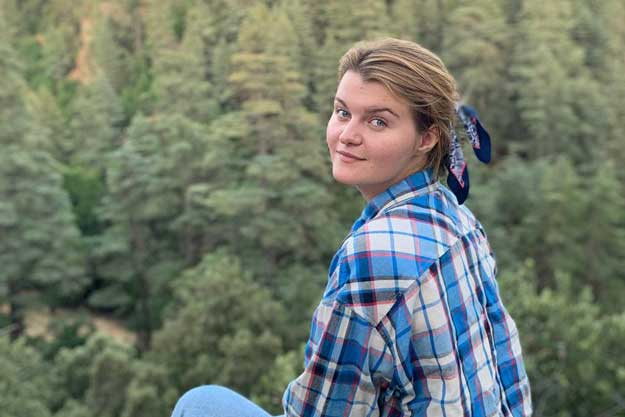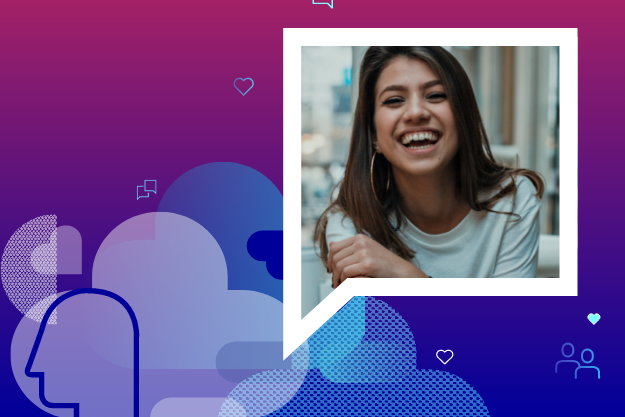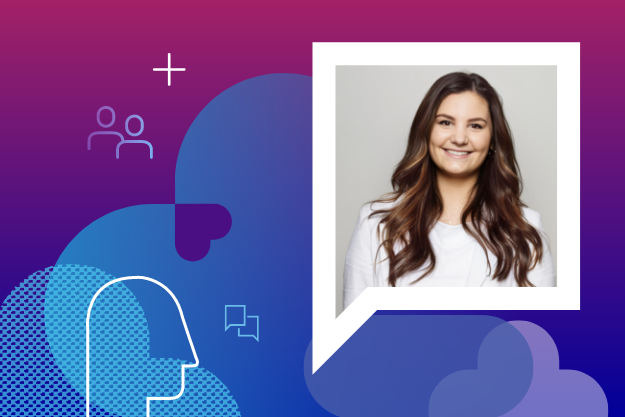Making your social media content accessible to your entire target audience is a game changer for brands looking to cultivate customer loyalty and connect with their broader community. Award-winning marketing consultant and author Fab Giovanetti founded Alt Marketing School to help marketers create purpose-driven strategies and connect more authentically with their customers. Fab is dedicated to educating marketers on building more inclusive, human, and accessible strategies (while saving time), and regularly shares her expertise with her online community.
Emplifi chatted with Fab about the importance of inclusion in social media marketing, and how brand teams can reach a wider audience by prioritizing accessibility in their content. Check it out!
We’d love to get to know you! Tell me a bit about yourself, your background in marketing, and your current role.
Hi, my name is Fab! I'm originally from Italy, and I've been a marketer for 15 years. I've been a marketing consultant, I worked in-house for a couple of years at the beginning of my journey, and, for almost 10 years now, I've been self-employed. My background is in community management and social media marketing, which brought me into the whole spectrum of marketing.
I'm a learner, and I’m the head teacher at Alt Marketing School. There’s generally a gap of knowledge when it comes to marketing in an ethical, conscious way for others and for ourselves. Our idea is to make marketing more inclusive, fun, exciting, accessible, and impactful overall.
How would you define accessible marketing, particularly as it relates to social media?
One of the things about marketing that has to shift is understanding that, in its entirety – especially being an online medium – we need to bridge the gap between tech and being human-first. Accessible marketing is really thinking about the humans behind the experience and asking whether or not your marketing is built in a way your audience understands.
The second layer is marketing that accounts for the way that content is created and consumed. Accessible marketing accounts for the way that content is built and engaged with by everyone in your audience – sharing content that they’re able to consume. As more creators take to social media and more user-generated content (UGC) is shared by everyday users, it’s important that the major platforms they rely on provide them with the tools they need to reach everyone in their audience. The platforms have a responsibility to give those tools to us.
Why is it so important for brands today to make their social content accessible?
It goes back to the customer and consumer-first thinking, which is a lot of what we teach in marketing. From a brand perspective, we're tapping into an audience that we wouldn't usually reach. And, that outlines a bigger problem, which is that a lot of people still struggle to access social media content because of limitations in accessibility.
For example, one of the most practical ways to make your social content more accessible is to use Camel case in hashtags. One of our graduates shared with me that most hashtags will be automatically reformatted to lowercase on social media, which screen readers will read as one word. Seemingly little things like this that we don’t realize are preventing a lot of people from accessing our content, and accessible social means opening up that conversation to more users.
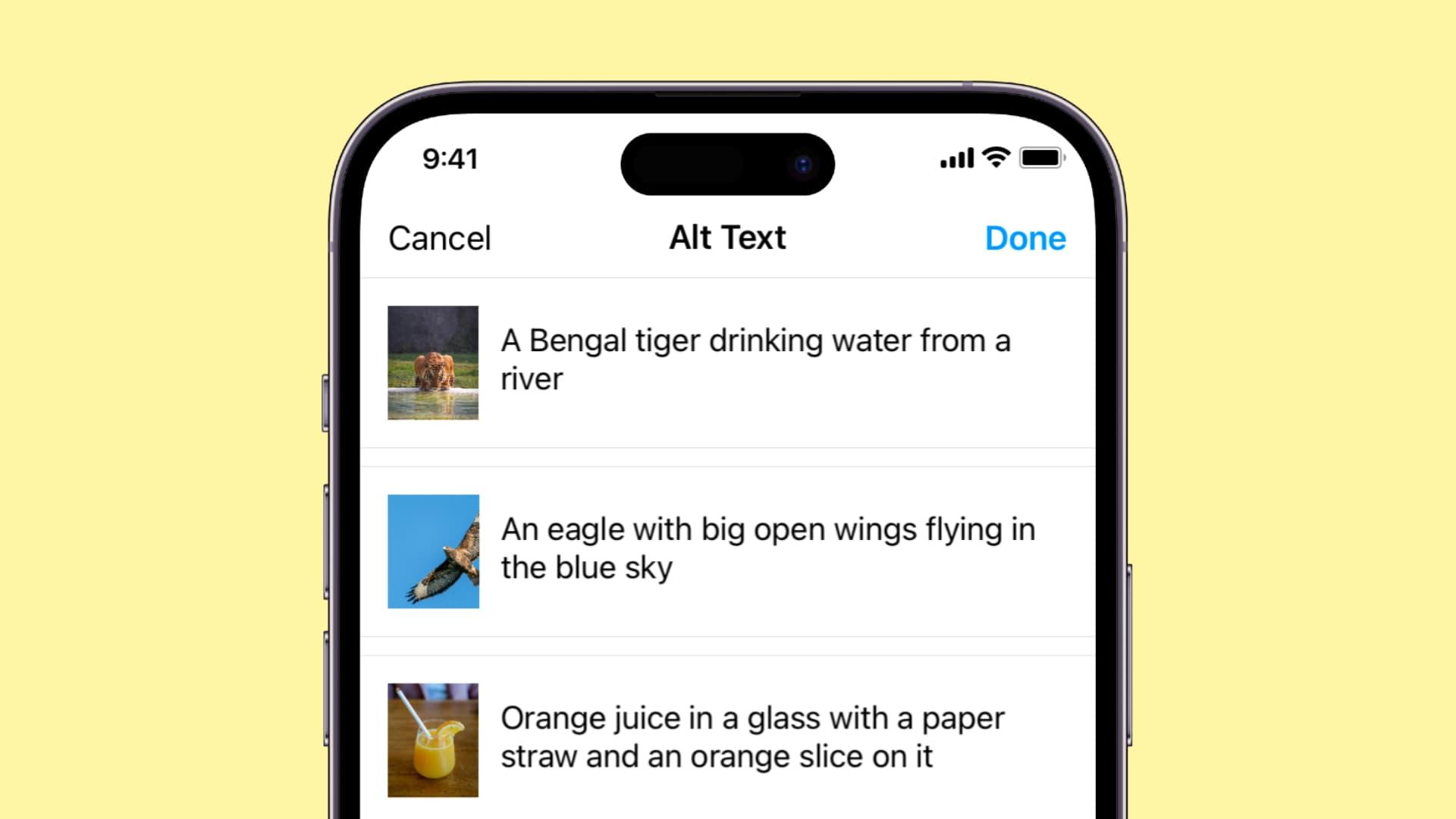
Alt text on Instagram (Source)
From a business perspective, accessible marketing brings more people into your world while deepening existing relationships within your community. It’s all about building a positive impact by caring about your community and giving them content they can actually interact with.
What brands have you seen doing a great job at making their social content and strategy accessible?
Pinterest hosted its annual advertiser’s summit, Pinterest Presents, earlier this year, and you could really see that the team put a lot of effort into making sure their content was accessible from every single front. There was captioning, a live transcript, and even a sign language interpreter who was there live. Pinterest knew the scale of this event was huge, and they really wanted to tap into the largest audience they could. That’s why they made sure that they leveraged all of the different ways their community could gather and retain the information.
This was a great example, and I wish I could tell you that every single piece of content that we put out is going to have all of those options for people to access. That said, there are so many things creators and brands can do now, including the basics like text captioning and ADA-compliant color contrast.
What advice would you give social media managers looking to share more accessible content (when they don’t always have a team/lots of resources)?
Aside from using capital letters in hashtags, there are quite a few things you can do like video captioning. I would say, start small and start smart. Look at the types of platforms that you're on and ask yourself, “Is there anything I'm doing on this platform that is prohibitive for some people who want to access my content?”
If you’re already doing the basics, go into the next step of creating a checklist for the different types of content you share. That might sound weird, but when you have a busy schedule and 17 different pieces of content to create in a day, it can be hard to remember the small details.
Lastly, think about your language; it’s an element of accessibility that you might not think about. You can maintain your brand’s tone of voice while making sure what you’re saying is understandable. In the B2B world, we tend to throw around big words and expect everybody to understand them. Unless you don’t want to speak to a certain subset of your audience, be mindful of this and put yourself in the shoes of your audience.
Do you think the rise of generative AI will impact accessibility in social media marketing?
I think so, and I tend to look at the positive side of this. In terms of social media marketing, AI tools have helped us manage our workload and goal of trying to be as accessible as possible. Even though transcripts and captioning are now commonly adopted by many marketers when creating content, they can take a long time to do without the right tools. Using AI as a time-saving device and to make your content more accessible is a win-win for marketers.
If you’re using AI to generate content, make sure your inputs and prompts reflect your accessibility checklist and that the content you get is taking into account the needs of your audience. If it’s visual, ensure you can provide alt text for it.
Do you think there's one social platform that caters more to accessibility than others?
I genuinely, because of what I’ve seen and their summit, believe Pinterest is doing a really great job. They are doing it behind the scenes, no bells and whistles, but they are incorporating changes from both an inclusion and an accessibility standpoint. Pinterest’s platform helps people sort through images and even has a hair pattern search so users can find products and ideas based on their different hair types. Things like that actually have a big relevance for communities that don't find themselves being seen. From an inclusion standpoint, that's huge.
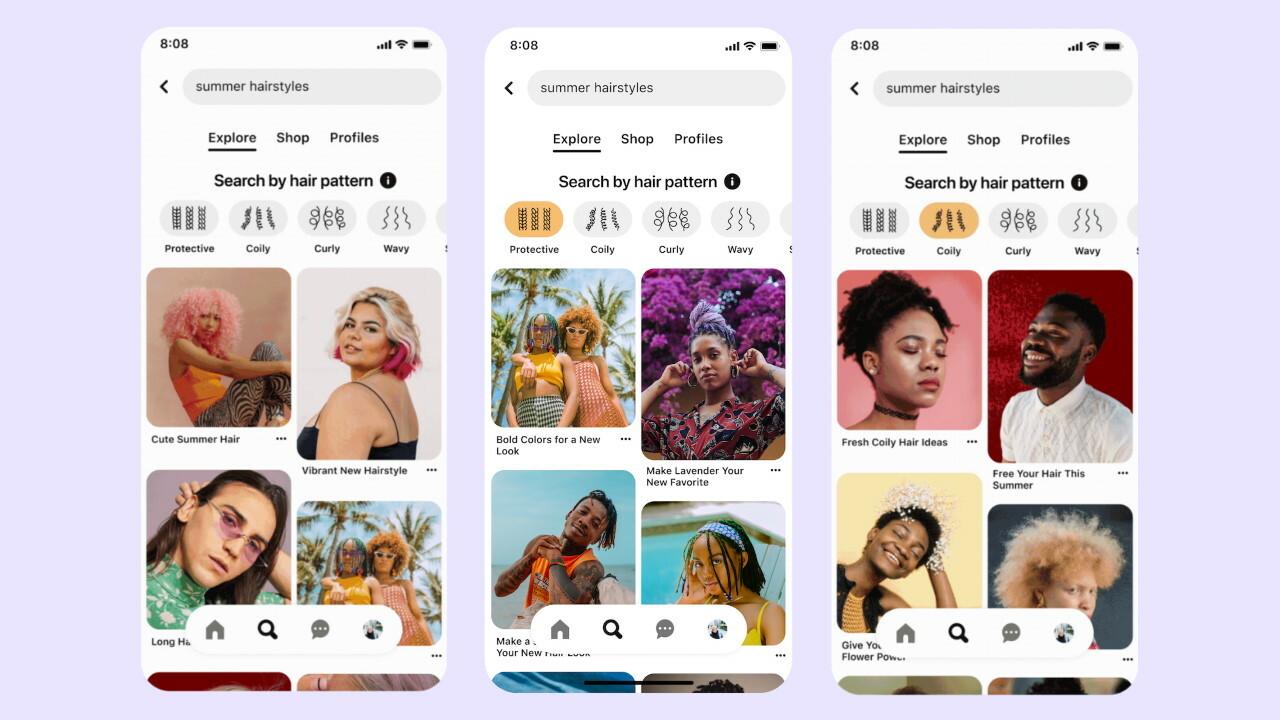
Pinterest is taking a layered approach with all the accessibility features and enhancements that they offer. The problem is that people don’t talk about Pinterest when it’s actually a pretty good platform if your audience resides there. Nevertheless, the core idea is to ask yourself if your broadcast channels allow your specific audience to connect with your brand and its content.
Any other insights you’d like to share with our audience?
The most important thing to remember is that content accessibility is not just a box-ticking exercise, even if you’re using a checklist. Think about it as a way to build an evolving system that integrates with your content workflow. It's a case of constantly staying up to date on the latest features and platforms and trends in social. Make it a practice to learn how features and platforms are evolving, for your brand and for your audience, because that will really help in the long run.
Connect with Fab (LinkedIn, Instagram, and X) and learn more about Alt Marketing School (LinkedIn, Instagram, and X).













